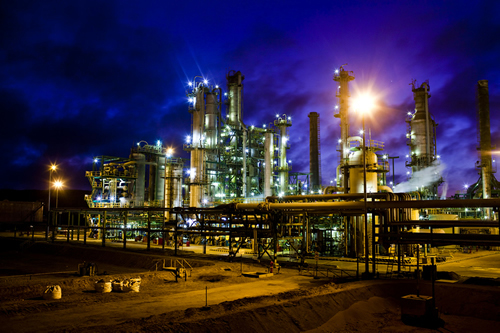
It was in July of 1969, during the presidency of Juan Velasco Alvarado, that Petroperu was created based on La Pampilla Sate Refinery and expropriated refineries. In the more than four decades since the company has been a major contributor to the country’s economy.
This comes in spite of the considerable political, administrative and macroeconomic challenges it has faced over the years. From the outset Petroperu was tasked with operating and maintaining virtually every complex oil patch in the country by itself. It was thanks to the skills and dedication of its Peruvian workforce that is was able to continue delivering petroleum products without any supply disruption, thus becoming the most important state-owned company in Peru.
Today Petroperu’s largest project is the Talara Refinery Modernization Project, an undertaking that the company highlights as an example of a successful South American mining energy and minerals project that is increasing its influence locally and internationally.
The company’s involvement with the Talara Refinery dates back to 1998 when it first contacted Texas based-consultancy Bonner & Moore to carry out a study to help adapt the refinery to current needs, improving the quality of diesel fuels with a maximum sulphur content of 2,000 parts per million (ppm).
The passing of legislation in March 2006 brought in rules regulating diesel fuel sulphur content to a maximum of 50 ppm, thus requiring the company to essentially formulate an entirely new project that would comply with the said standards. This is what inspired the company to embark on its mission to develop a modern Talara Refinery with fuel production which meets the quality requested by the country’s legal regulations and international markets, within a framework of social responsibility, environmental protection and adequate profitability.
A megaproject of engineering and construction, the modification involves the expansion of existing units at the refinery as well as the installation of new process units, services and other requested facilities.
The project itself exists within a framework of social responsibility, environmental protection and the generation of market opportunities and has been given the name “Proyecto Modernización Refinería Talara” (PMRT). Upon completion it is expected to result in cleaner air due to the reduction in sulphur content in diesel and petrol, clean waste gas emissions from the refinery, reduced liquid fuel imports and an improvement in the commercial balance of hydrocarbons.
The social and environmental impact of the project is expected to benefit the Peruvian population on a number of levels. The Talara economy will be boosted by additional direct and indirect works, especially during the construction period and this will undoubtedly result in better economic opportunities for Talara. Furthermore, local businesses in Talara and other parts of Peru will be tasked with providing goods and services to the refinery during the construction and operation phases, providing economic opportunities to many people.
From the point of view of environmental feasibility, the Talara Modernization Project will improve the air quality of Peru, as well as the surrounding water quality, and it will not release oily or solid waste which is harmful for the environment. The proposed updates and the new units that will be added to the Refinery will be designed to comply with or exceed World Bank environmental rules, national rules and all local regulations.
The environmental investment projections are included in the general capital investment required for the modernisation. The current estimate is that the capital investment for the environmental part will be of approximately $1.3 billion. This amount includes the contingency factor or the location factor.
It cannot be denied that it has been a long and challenging process to get the project to the point where it is today. It was recognised from a very early stage that such a large scale project would require a significant investment of time, technology and capital resources. Based on a feasibility study carried out on behalf of Petroperu by Arthur D.Little it was clear that the costs of the project would be substantial and that even when taking into account its use of fast-track engineering and construction strategy it would not be able to commence operations until 2016.
While these factors may have put off a number of operators or companies, the fact is that the numerous social and environmental benefits that the modernization project will bring to the region make it very much worth the time, cost and effort of all concerned. This project will not only result in bringing in an attractive economic return, but will also help guarantee that Petroperu is able to continue creating significant value for Peru and its citizens for many years to come.
Today the implementation of the modernization project is well under way, with the preliminary engineering and technology phase having commenced at the end of 2009. Come the estimated culmination of the undertaking in 2016 it is expected to have achieved a number of positives, not least of all increasing the value of Petroperu as a business. On top of this the project will have transformed the Talara Refinery into one of Latin America’s most modern, increased its production capacity by approximately 50 percent and most importantly of all it will have done more to promote the sustainable economic development of the region than perhaps any project of its kind before.
Written by Will Daynes, research by David Brogan
DOWNLOAD
 Petroperu-AM-O&G-June13-Bro-s.pdf
Petroperu-AM-O&G-June13-Bro-s.pdf













